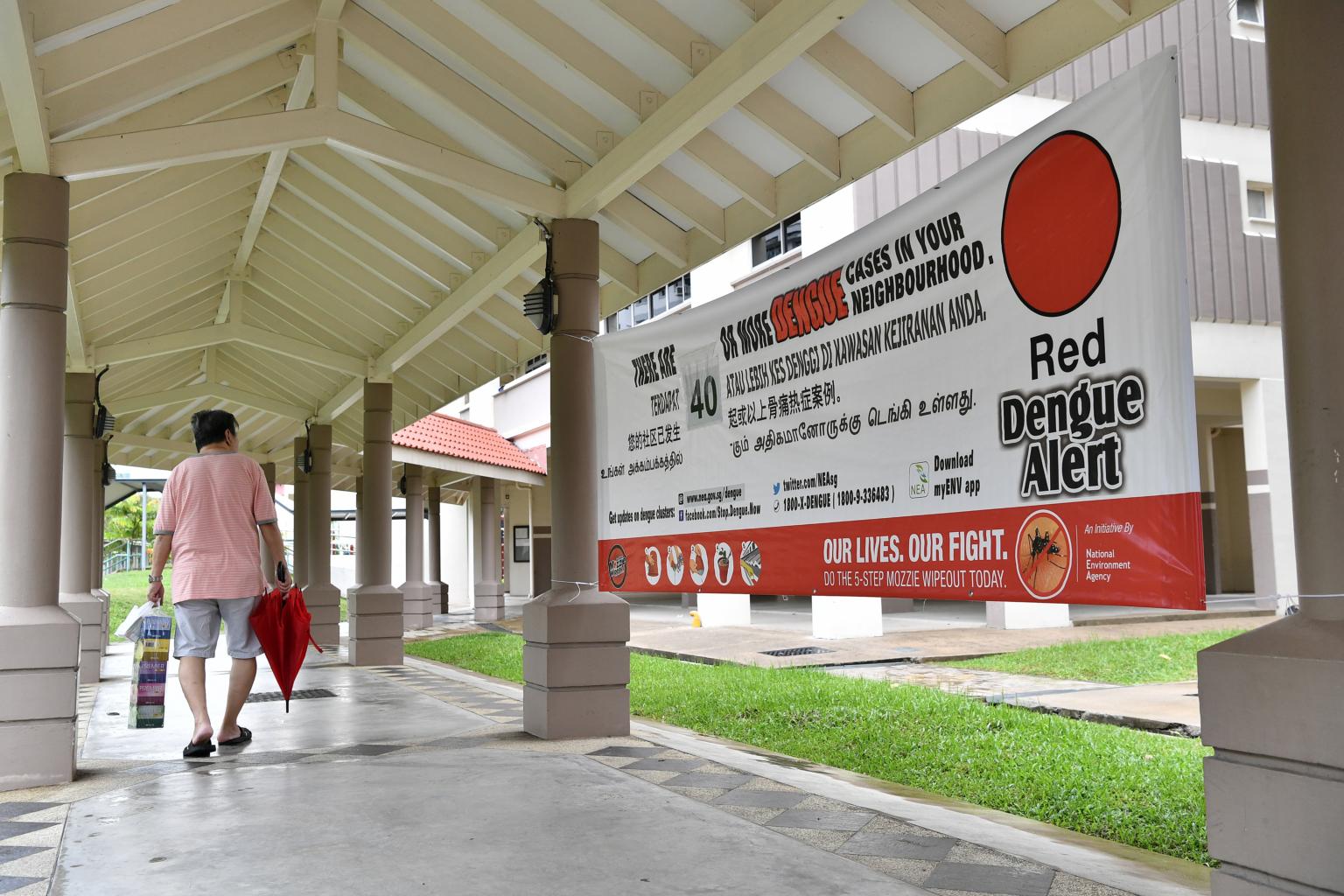Advances in Singapore's Zika and dengue fight
Scientists' success in mapping out structure of viruses crucial for developing treatments
Sign up now: Get ST's newsletters delivered to your inbox

Singapore is a major dengue hot spot, and 2,457 dengue fever cases were reported in the first 3½ months of the year - more than three times the number in the same period last year - with three deaths.
PHOTO: ST FILE
Vanessa Liu
Follow topic:
Singapore scientists have succeeded in mapping out the structures of the dengue and Zika virus strains - a crucial milestone in the development of treatments for the potentially deadly diseases.
Researchers from A*Star's (Agency for Science, Technology and Research) Genome Institute of Singapore (GIS), together with scientists from Duke-NUS Medical School and A*Star's Bioinformatics Institute mapped the long genetic materials of four dengue and four Zika virus strains.
They studied the viruses' activities and vital parts to identify portions of their genetic material that could be targeted for treatments.
Dr Wan Yue, a principal investigator at GIS and lead author of the study, said: "One needs to understand the shape and mechanism of a lock, in order to design a key that can open it. Similarly, mapping the shapes and structures of the dengue and Zika viruses will boost understanding of their biology, and contribute significantly towards designing drug treatments targeted at these viruses."
Both dengue and Zika are flaviviruses spread by the Aedes mosquito. There are no effective treatments for either disease.
Singapore is a major dengue hot spot, and 2,457 dengue fever cases were reported in the first 3½ months of the year - more than three times the number in the same period last year - with three deaths.
Worldwide, the incidence of dengue has grown dramatically, with some researchers estimating 390 million dengue infections a year.
Zika hit the headlines during an epidemic during 2015 and 2016, with reports of adverse health effects observed in South America.
These included irreversible birth defects such as microcephaly - when a baby is born with a smaller head than normal.
To make things worse, climate change is turning up the heat: Up to a billion more people could be exposed to mosquito-carried viruses, including dengue fever and Zika, by 2080 if global warming continues at current rates, researchers have warned.
In another effort that will help boost disease management and control, scientists from A*Star - in collaboration with the Environmental Health Institute of the National Environment Agency, and the National Centre for Infectious Diseases - have developed a test to detect and differentiate between multiple vector-borne flaviviruses, including dengue and Zika, at the same time.
The technique has the potential to be developed into a diagnostic tool that can screen for multiple flaviviral infections using a small volume of blood in a single test, the researchers believe.
The protein-based test works by tracking a particular protein - nonstructural protein 1 - which is secreted by each flavivirus and is unique to each.
Currently, each flavivirus diagnosis requires a specific test, said A*Star, and even if the samples can be combined, this tends to compromise detection sensitivity.
Dr Heidi Brown, assistant professor of epidemiology and biostatistics at the University of Arizona, said that the capacity of the new test to distinguish the types of viruses present in a small sample would have implications for understanding outbreaks that take place around the same time. She cited the concurrent outbreaks of the Chikungunya and Zika virus, which took place in the Western Hemisphere in overlapping succession, as an example.
Dr Jayantha Gunaratne, a principal investigator at A*Star's Institute of Molecular and Cell Biology, and lead researcher of the study, explained that the test has many advantages over current tests, including the ability to diagnose and determine multiple flaviviruses and their types over a longer diagnostic window.
The research team plans to further develop the prototype test and eventually commercialise it.

